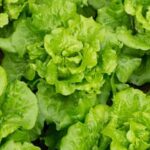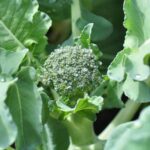Are you considering starting your own vegetable garden, but unsure of where to begin? Choosing the right vegetables to grow is a crucial step in ensuring a successful and fruitful gardening experience. In this article, we will explore the three best vegetables to keep for gardening and discuss their benefits. From beginner gardeners to those with limited space, there are options for everyone to enjoy the satisfaction of growing their own produce.
Growing your own vegetables offers numerous benefits, including access to fresh, nutritious produce, reduced grocery expenses, and the satisfaction of producing your own food. However, it’s important to choose the right vegetables that are well-suited for gardening in order to maximize success and yield. By focusing on the best options for your specific needs and circumstances, you can ensure a bountiful harvest while enjoying the process of nurturing your plants.
Whether you’re new to gardening or have limited space, learning about the best vegetables for your unique situation is essential. By understanding which vegetables are most suitable for your climate, level of experience, and available resources, you can set yourself up for a rewarding gardening journey. Join us as we explore how to select the ideal vegetables that will thrive in your garden and provide you with an abundance of fresh produce throughout the growing season.
Choosing the Right Vegetables for Your Garden
When it comes to gardening, choosing the right vegetables for your garden is crucial for a successful harvest. It’s important to consider your climate and the specific conditions of your garden when selecting which vegetables to grow. By choosing the right vegetables for your garden, you can ensure a bountiful and healthy harvest.
Consider Your Climate
One of the most important factors to consider when choosing vegetables for your garden is your climate. Different vegetables thrive in different climates, so it’s essential to choose those that are well-suited to the temperatures and weather patterns of your region. For example, tomatoes and peppers tend to do well in warmer climates, while cool-weather crops such as lettuce, spinach, and broccoli are better suited for cooler regions.
Types of Vegetables to Consider
There are various types of vegetables to consider when planning your garden. Root vegetables like carrots, beets, and radishes grow well in many different climates and can be an excellent choice for beginner gardeners. Leafy greens such as kale, Swiss chard, and spinach are also relatively easy to grow and provide a nutritious addition to any diet. Additionally, vine vegetables like cucumbers, zucchini, and squash can be ideal for small spaces or container gardening.
When choosing the right vegetables for your garden, it’s essential to consider not only the climate but also factors such as space limitations and personal preferences. By carefully selecting the vegetables that are best suited for your specific growing conditions, you can set yourself up for a successful gardening experience with a bountiful harvest at the end of the season.
The Best Vegetables for Beginner Gardeners
Starting a vegetable garden can be an exciting and rewarding endeavor, especially for those new to gardening. When choosing the best vegetables to keep for gardening, it’s important to consider which ones are easy to grow and maintain. For beginner gardeners, starting with low-maintenance vegetables can help build confidence and set the stage for successful future harvests.
One of the best vegetables for beginner gardeners is the tomato. Tomatoes are relatively easy to grow and are adaptable to various climates. They can be grown in containers or directly in the ground, making them suitable for those with limited gardening space. With proper care and maintenance, tomatoes can produce a bountiful harvest that will provide homegrown flavor to your meals throughout the growing season.
Another great vegetable for novice gardeners is the leafy green lettuce. Lettuce is a cool-season crop that thrives in early spring or late summer when temperatures are milder. It requires minimal maintenance and can even be grown in small spaces or containers. Additionally, lettuce leaves can be harvested continuously, providing a steady supply of fresh greens for salads and sandwiches.
Carrots are also an excellent choice for beginner gardeners due to their ease of growth and minimal care requirements. These root vegetables prefer loose soil and plenty of sunlight but do not require constant attention once they are established. Carrots can be sown directly into the ground or raised beds, making them an ideal option for those with limited gardening space or poor soil quality.
| Vegetable | Growing Conditions |
|---|---|
| Tomato | Adaptable to various climates; grows well in containers or directly in the ground |
| Lettuce | Cool-season crop; requires minimal maintenance; suitable for small spaces or containers |
| Carrots | Prefer loose soil and plenty of sunlight; do not require constant attention once established |
The Best Vegetables for Small Spaces
When it comes to gardening in small spaces, it’s important to choose vegetables that are well-suited for such environments. Limited space doesn’t have to mean limited options, as there are plenty of vegetables that can thrive in containers or even be grown vertically. With the right approach and some helpful tips, even those with the smallest of spaces can enjoy a successful vegetable garden.
Ideal Vegetables for Container Gardening
For those with limited outdoor space, container gardening is a great option. Some of the best vegetables for container gardening include tomatoes, peppers, lettuce, spinach, and herbs such as basil and parsley. These plants don’t require a large amount of space for their roots to grow and can be easily contained within pots or other suitable containers.
Tips for Vertical Growing
Vertical gardening is another excellent option for those with limited gardening space. Vegetables such as cucumbers, beans, peas, and certain varieties of tomatoes are well-suited for vertical growing. By utilizing trellises, stakes, or other vertical structures, these vegetables can thrive without taking up much ground space. It’s important to provide adequate support for their vines or stems as they grow upward to ensure a successful harvest.
Maintaining Small-Space Vegetable Gardens
Regardless of the type of small-space gardening chosen, it’s essential to provide the right care and attention to ensure the success of your vegetable garden. Regular watering, proper sunlight exposure, and timely fertilization are key components in maintaining healthy plants.
Additionally, monitoring pests and diseases is crucial in preventing any potential damage to your compact vegetable garden. With these considerations in mind, even those with minimal space can enjoy the pleasures and benefits of growing their own fresh produce at home.
The Best Vegetables for Maximizing Yield
When it comes to gardening, maximizing yield is a top priority for many avid gardeners. By choosing the right vegetables to grow, you can ensure a bountiful harvest that will last you throughout the season. Here are some of the best vegetables for maximizing yield:
- Tomatoes: Tomatoes are one of the most popular vegetables to grow in home gardens, and for good reason. They are known for their high yield, and with proper care, one tomato plant can produce an abundance of fruit throughout the season. Consider growing different varieties of tomatoes to enjoy a diverse range of flavors and colors.
- Zucchini: Zucchini is another vegetable that is known for its prolific yield. In fact, zucchini plants are known to produce so much fruit that many gardeners find themselves with an abundance of zucchinis by the end of the season. It’s important to stay on top of harvesting these squash to prevent them from growing too large and tough.
- Green beans: Green beans are not only easy to grow, but they also offer an impressive yield. With just a few plants, you can expect to have an ample supply of tender and crisp green beans throughout the season. Consider both bush and pole bean varieties depending on your available space.
In addition to choosing the right vegetables for maximizing yield, there are also techniques such as succession planting and companion planting that can help increase your harvest. Succession planting involves sowing seeds or planting seedlings at staggered intervals to ensure a continuous harvest throughout the growing season. On the other hand, companion planting involves growing certain plants together to maximize growth and health while minimizing pests.
By incorporating these tips and selecting high-yield vegetables like tomatoes, zucchinis, and green beans into your garden plan, you’ll be well on your way to enjoying a productive and abundant harvest that will provide you with plenty of fresh produce for meals and preserves throughout the year.
The Best Vegetables for Health and Nutrition
When it comes to choosing which vegetables to grow in your garden, considering the health and nutritional benefits is important. By growing your own vegetables, you can ensure that you are consuming fresh, nutrient-rich produce that will benefit your overall health. Here are some of the best vegetables for health and nutrition:
- Kale: Kale is a superfood that is packed with vitamins A, C, and K. It also contains antioxidants and fiber, making it an excellent choice for those looking to improve their overall health.
- Spinach: Spinach is another nutrient-dense vegetable, rich in iron, calcium, and vitamins A and C. It’s incredibly versatile and can be used in a variety of dishes, making it a great addition to any garden.
- Broccoli: Broccoli is high in fiber, vitamins C and K, and contains antioxidants that help reduce inflammation. It’s easy to grow and provides an abundance of nutrients for a healthy diet.
In addition to these specific vegetables, it’s important to note the importance of eating fresh, homegrown produce for overall health. By growing your own vegetables, you have control over how they are grown and harvested, ensuring that they are free from harmful chemicals or preservatives.
Including these nutrient-packed vegetables in your garden not only benefits your own health but also allows you to share the bounty with friends and family. Encouraging others to eat fresh vegetables from your garden promotes better nutrition within your community. Start planning your vegetable garden today by including these nutritious options.
The Best Vegetables for Seasonal Gardening
When it comes to seasonal gardening, choosing the right vegetables to plant can make a big difference in the success of your garden. Depending on the season, certain vegetables thrive while others struggle. It’s important to select vegetables that are well-suited to the specific climate and conditions of each season.
For spring gardening, some of the best vegetables to consider are lettuce, spinach, carrots, radishes, and peas. These vegetables prefer the cooler temperatures of early spring and can tolerate light frosts. They are also quick-growing crops, allowing for multiple harvests throughout the season.
When it comes to summer gardening, tomatoes, peppers, cucumbers, zucchinis, and beans are excellent choices. These warm-weather vegetables require plenty of sunlight and warmth to thrive. With proper care and attention, they can yield an abundance of produce during the peak of summer.
In the fall, root vegetables such as potatoes, beets, turnips, and onions are ideal for seasonal gardening. These crops appreciate the cooler temperatures and can even withstand light frosts. Additionally, leafy greens like kale and Swiss chard also do well in the fall months. These vegetables tend to become sweeter after being exposed to cooler temperatures for a period of time.
| Season | Best Vegetables |
|---|---|
| Spring | Lettuce, Spinach, Carrots |
| Summer | Tomatoes, Peppers, Cucumbers |
| Fall | Potatoes, Beets, Turnips |
Conclusion
In conclusion, choosing the right vegetables for your gardening needs is crucial to the success of your vegetable garden. Whether you are a beginner gardener, have limited space, want to maximize yield, prioritize health and nutrition, or focus on seasonal gardening, there are a variety of options available to suit your specific requirements.
By considering factors such as climate, space, yield potential, nutrition content, and seasonal availability, you can make informed decisions about which vegetables to grow in your garden. It’s important to research and plan accordingly to ensure that you have a successful and bountiful harvest.
Overall, growing your own vegetables not only provides fresh and healthy produce for you and your family but also allows you to connect with nature and enjoy the satisfaction of cultivating your own food. So whether you have a backyard garden or just a small balcony space, consider starting your own vegetable garden today and begin enjoying the benefits of homegrown produce.
Remember that there are plenty of resources available for further information and assistance as you embark on this exciting journey into gardening. Happy gardening.
Frequently Asked Questions
What 3 Vegetables Grow Well Together?
Tomatoes, basil, and onions grow well together because they have different root depths and don’t compete for nutrients. Additionally, these three vegetables also provide natural pest control for each other, making them a great combination for a vegetable garden.
What Vegetables Should Every Garden Have?
Every garden should have a variety of vegetables such as tomatoes, peppers, carrots, lettuce, and cucumbers. These are all versatile and nutritious options that can be used in a wide range of recipes and provide a good balance of flavors and textures to the garden.
What Are the Easiest Vegetables to Grow and Maintain?
Some of the easiest vegetables to grow and maintain include radishes, lettuce, green beans, and zucchini. These vegetables are relatively low-maintenance, tolerate different soil types well, and are generally more resistant to pests and diseases compared to other crops.

If you’re looking to get into vegetable gardening, or are just looking for some tips on how to make your current garden better, then you’ve come to the right place! My name is Ethel and I have been gardening for years. In this blog, I’m going to share with you some of my best tips on how to create a successful vegetable garden.





